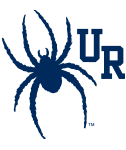One of the most challenging, and scary, things about going on the academic job market is coming up with your research plan. For the most part, you have spent your graduate and postdoctoral work focused on projects that were dictated in one form or another by your advisor. I was lucky to have mentors who encouraged me to follow the science in new directions and work on a variety of projects. That allowed me to be exposed to different literature and lot of techniques.
When I was at Duke, I remember sitting in on Lou Charkoudian’s dissertation defense on boronic ester pro-chelators for iron that she developed while in Prof. Kathy Franz’s lab. In addition, I followed the work of Prof. Chris Chang’s turn-on fluorescent probes for the detection of hydrogen peroxide. Both projects were exciting advances in chemical biology! When I moved to University of Illinois at Urbana Champaign, I started working for Prof. John Katzenellenbogen who had spent much of his career developing estrogen receptor (ER) modulators. I learned quickly that the phenol of the A-ring was important for binding to the receptor. That’s when my first idea for my independent career started to form – could we develop boronic ester pro-estrogens that could be released in specific inflammatory contexts like cancer or neurodegenerative diseases?
So a couple of years later, I wrote up a plan, submitted my applications (along with other projects), and landed a job at University of Richmond. Hyejin Park was my first student to work on this project – she became a dominant synthetic chemist. By the end of her first summer, she had made a couple of the compounds, started some release of active ligand experiments, and even threw them at some cancer cells. Then she found a paper that scooped the next compounds we had planned to make. Bummer. We regrouped and I decided to focus on subtype selective ER ligands. Hyejin spent the rest of her time at UR synthesizing more ligands. It is no surprise that she is doing synthesis in grad school now. When Hyejin graduated, she handed the project off to a new, just finished his first year at UR, student, Joseph McEachon. I tasked Joseph with mastering a bunch of techniques to analyze Hyejin’s compounds – he developed a UV spectroscopy assay, got a new departmental HPLC up and running, attempted mass spectrometry on a variety of instruments in the building, and performed fluorescence polarization assays. I was so excited to see the work coming together. We submitted the manuscript in mid-December and we got the SIX reviews back at the end of January. The reviewers asked us to do some cell experiments so I went into the lab to do some experiments myself. It really strengthened the paper, I believe. So, the end of the long story is that the manuscript was officially accepted last week!
Congratulations to Hyejin and Joseph! Thank you for all you did to make my first idea come to life. Here is the link to the corrected proof. I will update the publications page when the rest of the details are published (issue, page, etc). I am excited to see this in print and I hope you enjoy!
~jap

Recent Comments